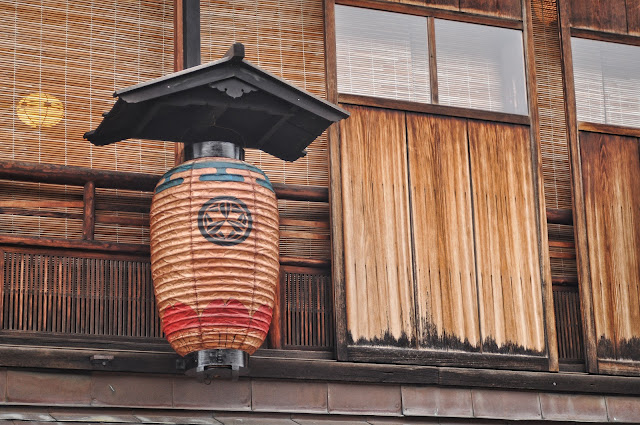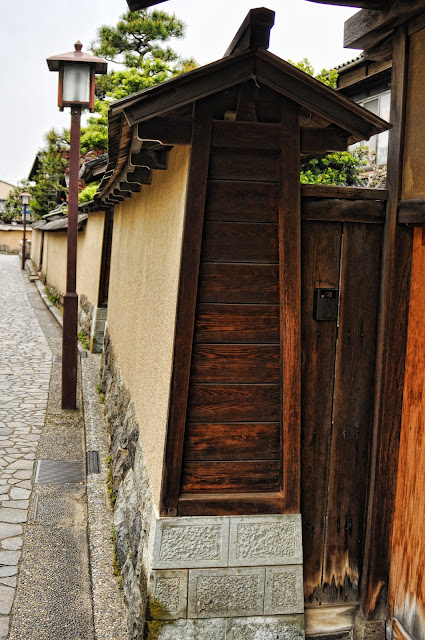 I've noticed that there are two types of Japanese spoken by foreigners in Japan; the Difficult kind and the Easy kind. The Difficult kind involves remembering a specific counter for every new noun and tough sentence structures that always end in a verb. So instead of saying, 'there're TWO rabbits eating ONE of your college diplomas' (it's a common phrase, true story) you have to say, 'rabbit 2counter for small animals (nihiki) your diploma 1counter for flat objects (ichi mae) they are eating.'
I've noticed that there are two types of Japanese spoken by foreigners in Japan; the Difficult kind and the Easy kind. The Difficult kind involves remembering a specific counter for every new noun and tough sentence structures that always end in a verb. So instead of saying, 'there're TWO rabbits eating ONE of your college diplomas' (it's a common phrase, true story) you have to say, 'rabbit 2counter for small animals (nihiki) your diploma 1counter for flat objects (ichi mae) they are eating.'The second less complicated kind of Japanese merely requires the speaker to 1) know English and 2) be able to scream it. The rising decibel levels are always a sure-fire indication. It's as though we gaijin think that anyone born outside of our own boarders has been tragically afflicted by hearing loss, rather than than facing the fact that only about 5% of the world's population speaks English as a first language.
There are, of course, variations. Sometimes I'll hear foreigners make an honest, yet still very half-assed, attempt at speaking English words in what they perceive to be a Japanese accent. This almost always ends in failure. "One more plate" becomes "uon moa pureto." Uncomprehending clerks hear "something something Plato (Greek philosopher)" and wonder if they're being asked to join a conversation on epistemology. They then try to speak back in Katakana English but the communication lines have already broken down. "Sorry Sarge, that last bombing took out the com-tower, perhaps if we shout..." Quite often I get the impression that this is exactly the same language you'd hear Americans use when instructing Javier on the finer points of lawn maintenance. "No, no, no, Javier. Put-o la baby Anchilla hedges around-o el perimeter.....o." Although the content is often different, it sometimes gives me a sense of nostalgia and for a moment I'll find myself searching for an El Torritos.
Even after spending 2 years immersed in the language (and trying to learn the Difficult kind of Japanese) I still imagine my everyday speech to sound like I should be callin the youngins in for possum pie, or making sure the back yard whiskey distillery hasn't caught fire. "Yall know them best place t'buy shaver's cream?" and "ts'gon rain the'morrow if I warsh muh clothes" were among some of the gems I uttered this week. But I get by, and I rarely find myself shouting, an action that's sure to prematurely shorten your ride if you're hitchin...
"Once there was a way.
To get back homeward."
-Golden Slumbers, The Beatles
There's always a way, and I was certainly on a non-conventional route, but I highly doubt Sir Paul was thinking about trying to solicit this journey in a strange East Asian language. Optimism however, was playing for my team that day. You'd be surprised at how far a smile will take you. So, after a small piffle (an elderly man on a bicycle, chuckling at my sign, informed me I was standing on the wrong side of the road), I was once again in an air conditioned car heading south. As Kanazawa and Ishikawa prefecture faded in the rear-view, I began focusing on the places ahead; more specifically Nara.
Register yourself for a heavyweight Japanese history bout and your bound to get everyone and their mother's opinion about the ancient capital of Nara. Here are my two yen worth, it's name is derived from the Japanese verb 均す (narasu meaning to flatten/level) likely because of all the landscaping work that was put into congruently blending it's many temples with the surrounding hills. Although it could also be the action your breath is subjected to when viewing it's prize belt (Todaiji temple, the largest wooden building in the world.)
The grounds are extensive, covering nearly half the city in open meadows and tree-lined walkways. In 2010, the city celebrated the 1,300th anniversary of it's assent to power. That's more than a millennium longer than my country has existed! No wonder America's youth run amok so furiously, our mother country has only just graduated from relative adolescence. Although it only housed the seat of government for 74 years, Nara's rich history and well preserved temples draw spectacular crowds at all times of the year, a fact that I probably should have paid more attention to...
 With all this in mind, or out of mind, I arrived in Nara bright eyed and bushy tailed, ready to drink in the mystic oriental wooden architecture and the peaceful atmosphere of the many parks. But first, I had to sort out some accommodation. From the tourist information office I recieved a list of the 79 hotels, minshuku, ryokan, youth hostels, etc. in the Nara area. After calling a few of the cheaper options, I began to see a pattern arise; it doesn't take a mathematical genius to understand the complexities of the number "full." No space, at capacity, ippai, manpai, lleno, no matter how you say it it still means no place for mattyboy to sleep that night. Golden Week Vacation had seen such an influx of visitors to Nara, that there weren't even any spaces left at the all night internet cafe. After calling each of the 79 residences, I'd exhausted all my choices. So I fell back into my meditative stance, beer in one hand, the other scratching the hair under my chin, my eyes catching the late afternoon light reflected off the temple roofs. Like a modern day homage to Rodin, but without the rigidity of bronze bracing.
With all this in mind, or out of mind, I arrived in Nara bright eyed and bushy tailed, ready to drink in the mystic oriental wooden architecture and the peaceful atmosphere of the many parks. But first, I had to sort out some accommodation. From the tourist information office I recieved a list of the 79 hotels, minshuku, ryokan, youth hostels, etc. in the Nara area. After calling a few of the cheaper options, I began to see a pattern arise; it doesn't take a mathematical genius to understand the complexities of the number "full." No space, at capacity, ippai, manpai, lleno, no matter how you say it it still means no place for mattyboy to sleep that night. Golden Week Vacation had seen such an influx of visitors to Nara, that there weren't even any spaces left at the all night internet cafe. After calling each of the 79 residences, I'd exhausted all my choices. So I fell back into my meditative stance, beer in one hand, the other scratching the hair under my chin, my eyes catching the late afternoon light reflected off the temple roofs. Like a modern day homage to Rodin, but without the rigidity of bronze bracing.I was weighing the various options for cheap transport back to Tokyo on my mental scales when a middle aged French couple asked if they could share my sunny bit of grass and imbibe the combini drinkables they'd also purchased. At about 3 sips in the English barrier began to grind along, and quickly feeling the approach of a sweaty classroom in Tokyo I was going out of my way to avoid thinking about, I tried switching to Spanish. Success! The man spoke it pretty well and after a bit of banter they revealed they'd been camping in the park for the last 5 days. "You just take down your tent around 5 am and no one bothers you" he said. Light bulb, quick search of the map I kept in my head, and I thanked them, finished my beer, and headed to the nearest 100 yen shop. A picnic tarp and a large bottle of water later, and I was staking out a grassy bit of tree-covered turf away from anything that might draw night visitors. I, however, didn't account for the shika!
According to legend, when the God Takemikazuchi arrived in Nara to help guard the new capital, he came on a white deer. Ever since this tale began to spread the deer of Nara have been regarded as heavenly, and are protected in the city as well as the prefecture. As a result, Nara koen (the city's park) is teeming with tame, gloopy-eyed Shika (deer) who have been known to get pushy, especially with small children, when there are rice crackers to be had. Apparently, to these animals, the end of the day does not necessarily mean the end of the begging session, and oh my have they learned how to nuzzle! Match this with the light from a super-full moon and you've got an interesting, though not very sleep filled night in the park. But hey, I've slept in worse places, and having the park to myself that night allowed me to get shots like this.
The next morning I hit the road early, and despite my bearing a slight musk of deer spit, I had no trouble hitching it back to Nagoya, where as luck would have it, I met a trucker headed all the way to Tokyo. I know it sounds like the start of a movie, but I may have missed my cue peacefully slumbering in the large comfortable seat. Overall, the few hiccups I'd had along the way did next to nothing to diminish the shine of the spectacular adventure I'd just completed. Full of great food, amazing places, interesting people, and never a need to shout out in English. Yoshi!
























































